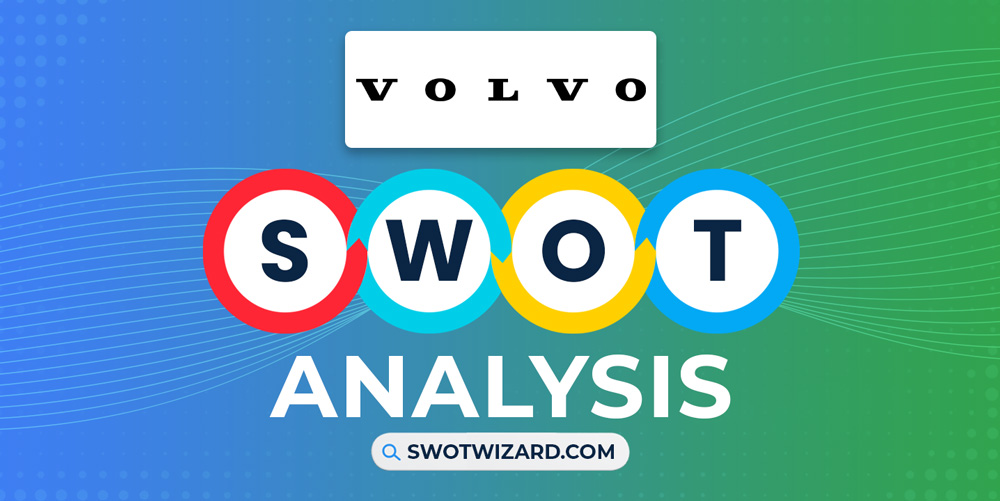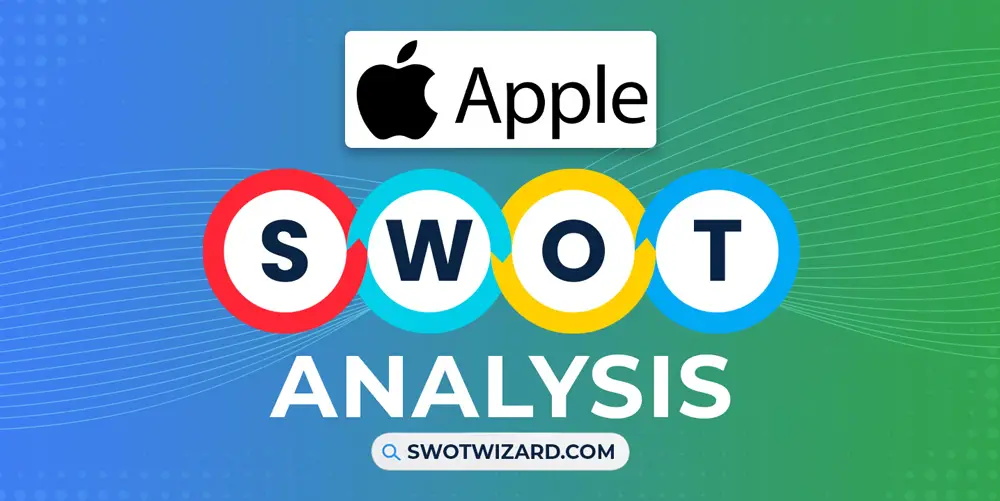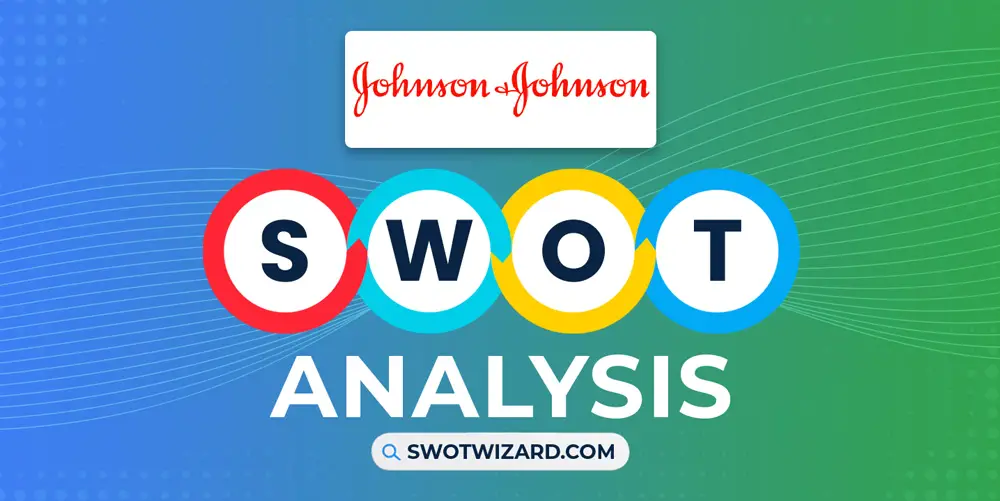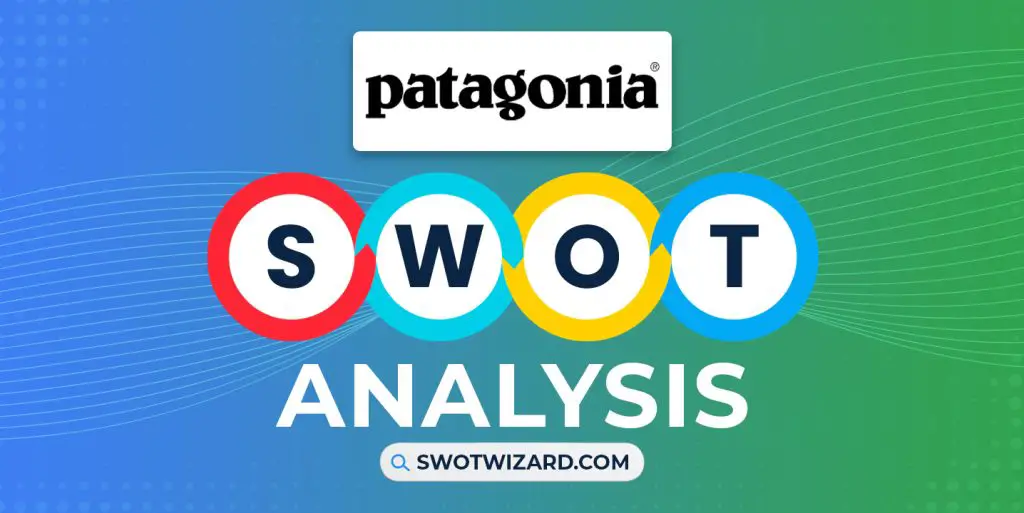Volvo has made its name with various models of affordable and luxurious cars with strong branding over half of the world. Whether you own a Volvo or not, you must have heard of it, and we will discuss its strengths, weaknesses, opportunities, and threats in this Volvo SWOT analysis.
Volvo: Company Overview
| Company | Volvo Group |
| Industry | Automotive |
| Founded | 1927 |
| Founders | Assar Gabrielsson, Gustav Larson |
| CEO | Martin Lundstedt |
| Headquarter | Gothenburg, Sweden |
| No. of Employees | 102,155+ |
| Annual Revenue | kr 473.479 billion (FY 2022) |
| Website | volvogroup.com |
Founded in 1927 in Gothenburg, Sweden, Volvo has evolved from building its first car, the PV4, into a global premium automotive company that employs over 102,155 people worldwide.
Significant milestones include unveiling one of the auto industry’s key safety innovations, the 3-point safety belt, in 1959 and launching their best-selling vehicle, the XC90 SUV, in 2002.
Now owned by Geely Holding, Volvo sold over 700,000 cars across 100+ countries in 2023, generating net revenue exceeding $538.95B. With a vision to provide sustainable luxury mobility, Volvo is investing heavily in electric vehicles and autonomous technology.
Product & Services of Volvo
Trucks | Buses | Construction equipment | Marine and industrial engines | Customer financing | Insurance and related services | Product related services
Volvo Competitors
BMW | Audi | Mercedes Benz | Toyota | Volkswagen | Honda | Hyundai | Ford
Did You Know?
Volvo gave away the patent for the three-point seat belt to other carmakers for free in the interest of public safety.
Strengths – Volvo SWOT Analysis
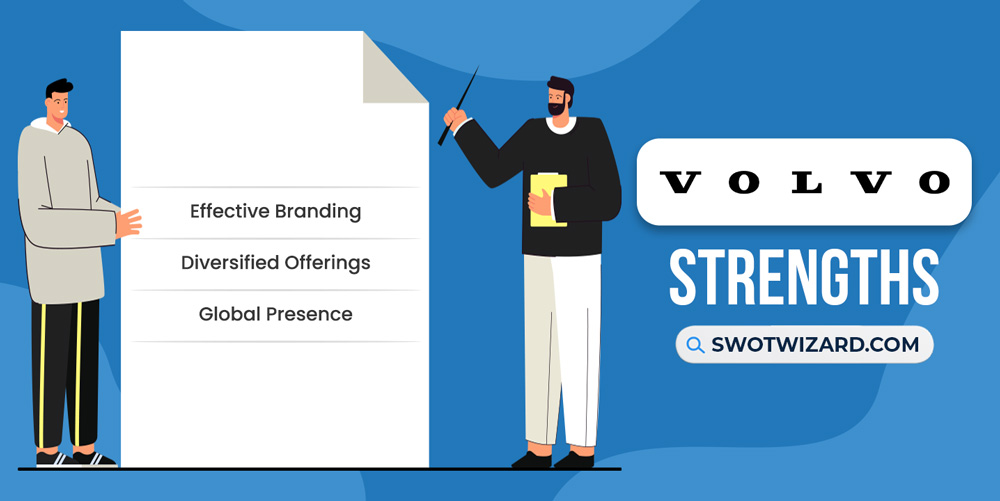
Effective Branding: The company has built an effective brand rooted in safety, sustainability, and Scandinavian design. As a result, Volvo ranked 79th in Interbrand’s 2023 Best Global Brands with a valuation of over $8.8B, clearly showing the brand’s presence and positive branding throughout the globe.
Diversified Offerings: The company has and sells a diverse range of vehicles, including sedans, wagons, crossovers, and SUVs. Specifically, its product portfolio comprises 8 model lines spanning segments from compact SUVs to large luxury SUVs. As a result, they can cater to different segments with different needs.
Global Presence: With cars sold in over 100 countries, Volvo possesses substantial global reach. As an illustration of the brand’s worldwide presence, over 708,716 Volvo cars were sold globally in 2023, with China, the US, and Europe as key markets. Besides, as per the data, the sales are projected to grow by 439.2k cars in the next 4 years.
Weaknesses – Volvo SWOT Analysis
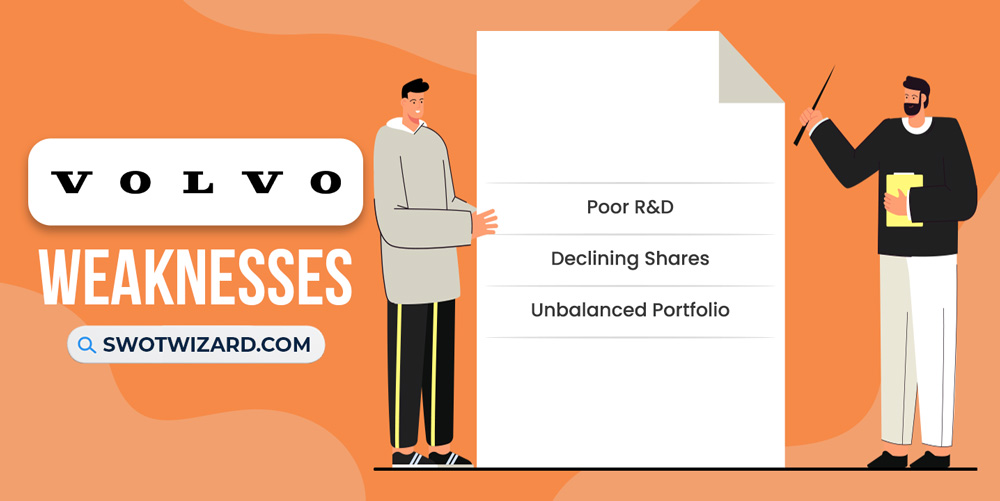
Poor R&D: Compared to leading premium rivals, the company spends relatively little on R&D. In 2023, Volvo spent $2.508B on R&D versus $8.5B and $16.9B for BMW and Volkswagen, respectively. It can hamper the growth and development of new offerings as there is little to no room for enough research and development.
Declining Shares: Over the past year, Volvo’s share price has dropped by 25%, lagging behind the broader automotive sector, not to mention that global market share has also declined recently. Despite strong financial performance, the market seems to doubt Volvo’s ability to sustain momentum, limiting the company’s access to capital for crucial investments.
Unbalanced Portfolio: Volvo’s lineup lacks breadth versus peers, missing key offerings in multiple segments. If we look at the offerings portfolio, Volvo has no executive or full-size luxury sedans, and It also lacks compact cars and small crossovers, which make up over 40% of premium vehicle sales.
Opportunities – Volvo SWOT Analysis

New Offerings: The company has opportunities to expand its portfolio into new, fast-growing segments. As a part of the plan, Volvo plans to launch its first fully electric midsize crossover in 2023, competing in a segment growing over 15% annually.
Market Expansion: With premium car sales forecast to grow over 50% by 2030, Volvo can grow by expanding geographically. As an illustration, Volvo is currently under-represented in China’s premium market, which is projected to triple in size this decade.
Strategic Partnerships: Volvo is exploring strategic technology partnerships to share costs while accelerating innovation. Most notably, Volvo and Geely are collaborating to harness synergies across electrification, connectivity, and autonomous driving technology development.
Threats – Volvo SWOT Analysis
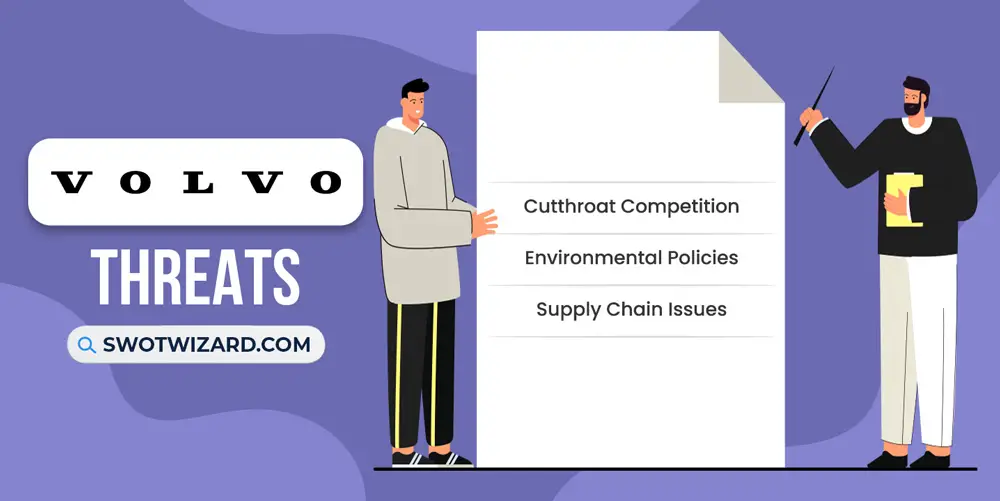
Cutthroat Competition: It goes without saying that Volvo faces intense competition from expanding luxury automakers. Besides, Volvo’s sales trailed rivals last year with under 750,000 vehicles sold versus BMW, Mercedes-Benz, and Audi, all selling over 2 million.
Environmental Policies: The company faces significant investments to meet tightening environmental regulations as countries target net-zero emissions. By illustration, Volvo plans to spend $3.3B through 2025 on electrifying their fleet to adhere to stringent EU emission rules.
Supply Chain Issues: Like all automakers, Volvo is threatened by ongoing semiconductor shortages and supply chain bottlenecks. Most recently, these issues contributed to a 12% Volvo sales decline in 2022 as production lagged in demand. Besides, the problems will likely continue in the coming years if no other options exist.
[Bonus Infographic] SWOT Analysis of Volvo
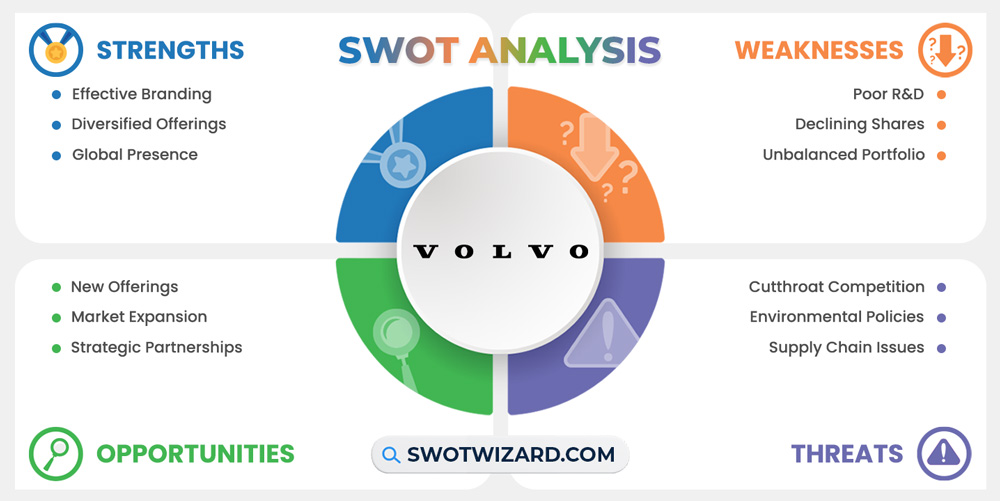
Recommendations for Volvo
Here are some recommendations for this Swedish car company, Volvo;
- The company should increase R&D investment closer to 2-3% of revenue, on par with premium rivals, to spur innovation in EVs, self-driving technology, and connectivity.
- Building additional plants in key growth regions like China and Europe would allow Volvo to boost sales, gain market share, and better customize vehicles for local markets.
- Prioritizing new crossover and SUV models will allow Volvo to tap into the fastest-growing premium segments, projected to reach a significant margin of luxury vehicle sales by 2025.
- Co-developing batteries and autonomous systems with leading tech firms would reduce costs and accelerate timelines for achieving parity in EVs and self-driving cars.
Frequently Asked Questions (FAQs)
Is Volvo now owned by China?
Yes, Volvo is now owned by China.
Is Geely using a Volvo engine?
Yes, Geely is using a Volvo engine.
Final Words on Volvo SWOT Analysis
Volvo possesses strengths like its reputation for safety and sustainability but faces threats from rising competition in the premium auto market. By investing more in R&D and crossovers to capitalize on EV and SUV growth opportunities, forging tech partnerships, and expanding manufacturing, Volvo can overcome weaknesses like declining market share to solidify its global presence as a leading luxury EV brand.
References
- Wikipedia contributors. (n.d.). Volvo. Wikipedia.

